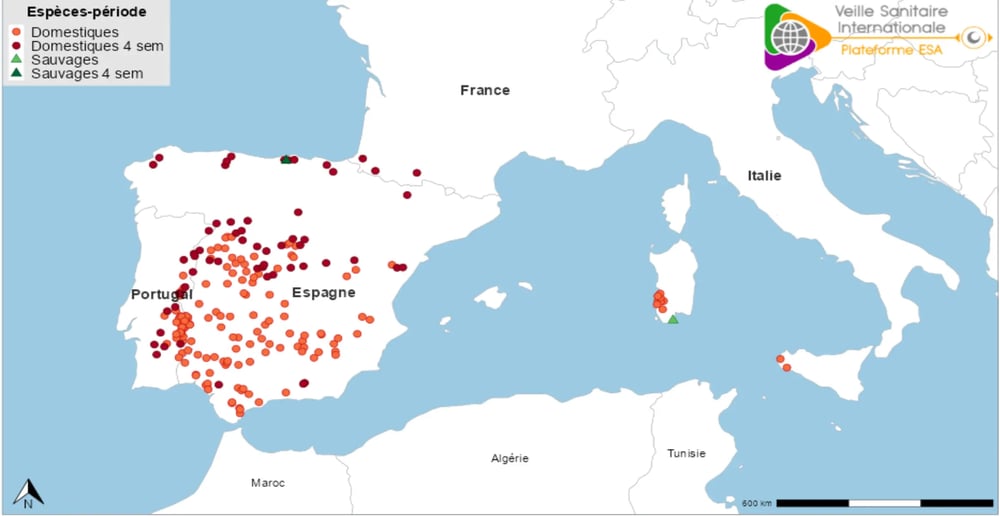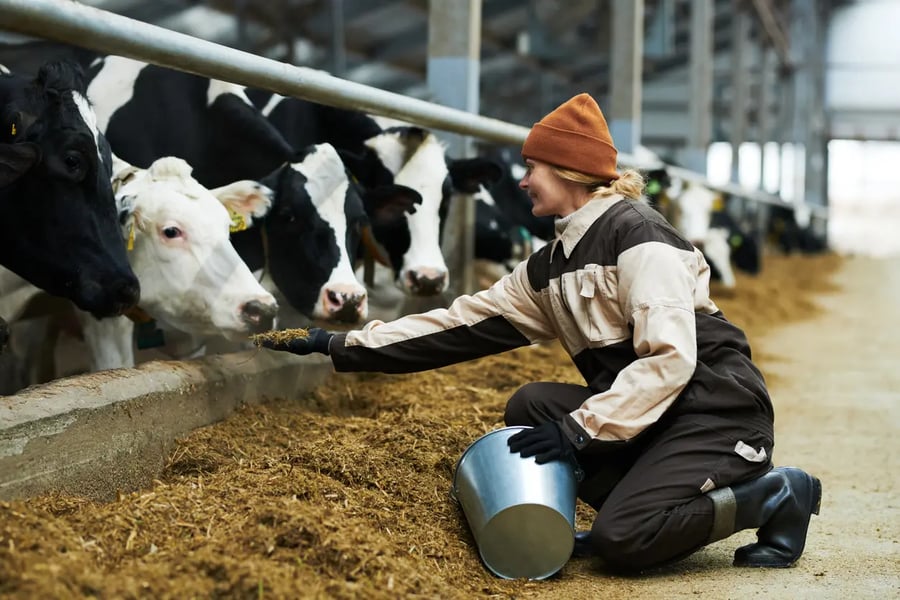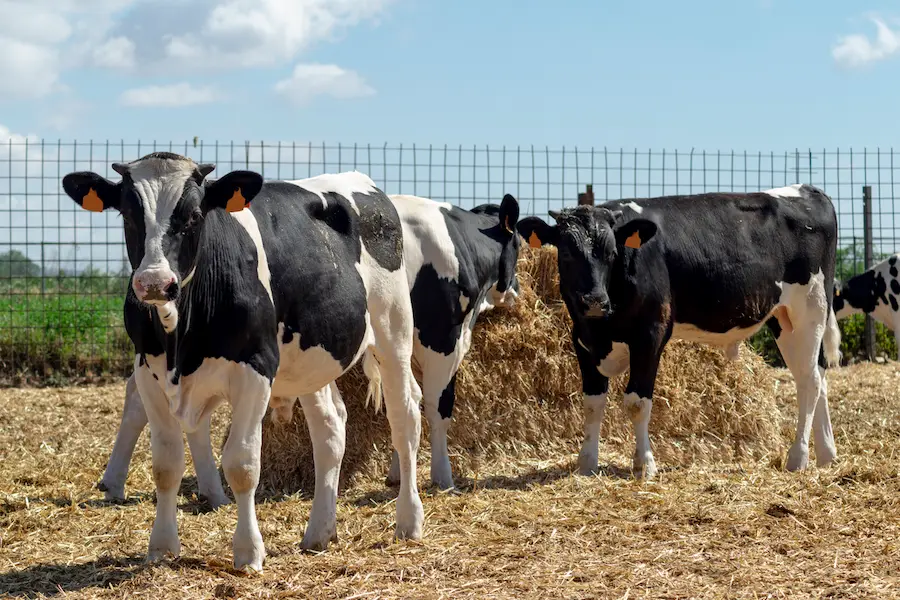The Epizootic Haemorrhagic Disease (EHD) is a vector-borne viral disease of ruminants. It is responsible for severe clinical signs and high mortality in white-tailed deer. But it can also infect domestic species. In small ruminants, it is generally asymptomatic. In cattle, on the other hand, it can cause clinical signs leading to economic losses on farms. The virus responsible for the disease is called EHDV. To date, there is a consensus on the existence of 8 different serotypes, named EHDV-1 to EHDV-8. For some authors, two additional serotypes exist.

In October and November 2022, several outbreaks appeared almost simultaneously in southern Europe: on the Italian islands of Sicily and Sardinia, and in Andalusia in southern Spain. The serotype isolated in these outbreaks was serotype 8. This serotype was first identified in 1982 in Australia, and never again until 2021 in Tunisia, where over 200 outbreaks were identified. Unlike the arrival of Blue-Tongue, a disease closely related to EHD and also transmitted by culicoides, in 2006 in the Maastricht region of the Netherlands, the first European cases of EHD occurred in southern Europe, in three distinct areas several hundred kilometers apart. The hypothesis of importation of the disease through the introduction of infected animals or the insect vector via a means of transport (air, sea, road or rail) therefore seems unlikely. Instead, experts assume that infected culicoides from North Africa were transported naturally by wind. This hypothesis is corroborated by the fact that the serotype 8 identified in Spain and Italy is the same as the one that has been actively circulating in Tunisia since 2021.
The spread of the disease then stopped from December 1, 2022, corresponding to the decline in vector activity. However, from June 2023 onwards, new outbreaks appeared increasingly to the north and east of the first outbreaks in Spain. By September 18, 2023, the disease was present in almost all regions of mainland Spain, in Portugal (near the border with Spain). The northernmost case was located 28 kilometers from the French border. In Italy, on the other hand, the disease has so far been confined to the two islands of Sicily and Sardinia.
September 18, 2023: the disease has officially crossed the Pyrenees mountains
Three outbreaks of the disease were confirmed on 18 September 2023 in south-west France, close to the Spanish border. The map below, available on the ESA platform website of the French Agency for Food, Environmental and Occupational Health and Safety (Anses), shows the outbreaks identified to date in Europe.

Figure 1. Location of outbreaks of epizootic hemorrhagic disease (EHD) detected since 10/25/2022 (date of detection of the first outbreak in Italy) and over the last four weeks (monthly incidence) (source: European Commission ADIS on 09/21/2023 ). [Source: Anses (ESA platform)]
EHD : a regulated disease in Europe
In Europe, EHD is a notifiable disease. Control measures, in the absence of vaccination, are based on restrictions on the movement of animals from infected areas (150 km radius around each outbreak) to other European countries. However, experts consider these measures to be "of limited effectiveness". This seems to be confirmed by the fact that the disease has spread from southern Spain to Portugal and France in less than one year.

What is the likely future?
It is, of course, difficult to predict what will happen in the coming weeks. However, historical data on the spread of Blue Tongue Disease, knowledge of vector activity and climatic data suggest that the disease may extend until early winter, particularly on the west coast of France (Atlantic coast), where the climate is milder and therefore more favorable to maintaining culicoides activity during the autumn than in more continental areas.
Key messages
- The first outbreaks appeared in Europe in October 2022 in Italy and Spain.
- The serotype identified is the same as that present in Tunisia since 2021.
- In less than one year, the disease has colonized two other countries (Portugal and France) despite the control measures applied.
References
Anses - Plateforme ESA. Bulletin Hebdomadaire de Veille Sanitaire Internationale – Santé Animale du 19/09/2023 https://www.plateforme-esa.fr/fr/bulletins-hebdomadaires-de-veille-sanitaire-internationale-du-19-09-2023 accessed on line 22.09.23
Anses – Plateforme ESA. https://plateforme-esa.fr/sites/default/files/2023-09/2023-09-21-ehdv_france_esa_vsi_0.pdf accessed on line 22.09.23
https://www.mapa.gob.es/es/ganaderia/temas/sanidad-animal-higiene-ganadera/notaehe_11_09_2023__tcm30-659755.pdf accessed on line 22.09.23
https://www.anses.fr/fr/virus-bovins-moucherons-emerge-en-europe accessed on line 22.09.23
https://agriculture.gouv.fr/sante-animale-detection-de-premiers-foyers-de-mhe-en-elevages-bovins accessed on line 22.09.23
https://www.woah.org/fileadmin/Home/eng/Health_standards/tahm/3.01.07_EHD.pdf accessed on line 22.09.23
About the author
Philippe Gisbert (Ruminants Global Technical Manager)
Philippe Gisbert started his career in 1994 as a Vet practitioner working with companion and farm animals for over 9 years. He then became Health Affairs Manager for Group Agena (artificial insemination company). In 2008 he joined Eurofins – Laboratoire Coeur de France as Animal Health Unit Manager where he worked for 7 years until he joined Ceva France as Technical Manager Ruminants (Infectiology, Vaccines and Diagnostic). Since 2020 he is Global Technical Manager for Biologicals, Udder Health and Antiinflammatories. He is a member of SIMV diagnostic and anti-infective technical groups and has integrated different working groups of ANSES and UNCEIA related to epidemiology, antibiotic resistance and reproduction in livestock.
Explore author’s articles


Leave your comments here